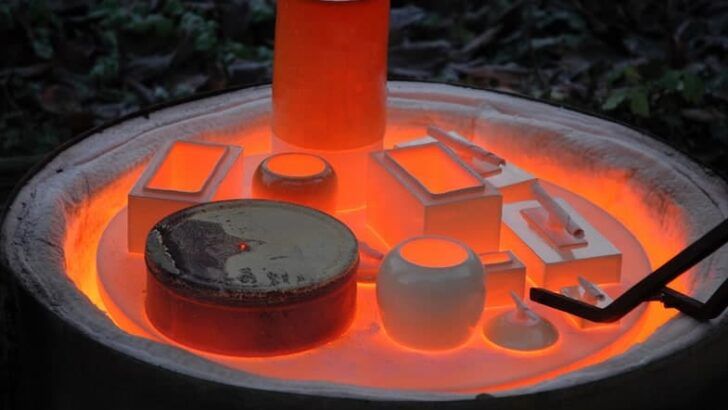Where Do We Get Soda Ash?
What is Soda Ash?
Soda ash, also known as sodium carbonate (Sodium carbonate – Wikipedia), is an alkali chemical refined from the mineral trona or naturally occurring sodium carbonate-bearing brines (Soda ash Definition & Meaning – Merriam-Webster). Its chemical formula is Na2CO3. Soda ash has been used for over 5,000 years and is the 10th most consumed inorganic compound in the world (What is soda ash – ETISODA).
Soda ash is a key industrial chemical that has many applications and uses. It is utilized in glass making, pulp and paper production, detergents, water treatment, chemical manufacturing, and other processes. In consumer products, baking soda is a cooking product made from soda ash. Soda ash acts as a leavening agent in doughs and batters. It reacts with acids to release carbon dioxide bubbles that help dough rise.
History of Soda Ash
Soda ash has been produced and used by humans for thousands of years. The earliest evidence of soda ash production dates back to ancient Egypt, where it was extracted from the ashes of desert plants high in sodium content (1). The ancient Egyptians used soda ash for applications like glassmaking, cleaning, and manufacturing soaps and detergents.
The first large-scale industrial production of soda ash began in 1791, when French chemist Nicolas Leblanc opened the world’s first soda ash factory (2). Leblanc’s process involved reacting salt with sulfuric acid, coal, and limestone to produce sodium carbonate along with calcium sulfide as a byproduct. This Leblanc process became the main method of soda ash production throughout the 1800s and was used to supply the growing glass, textile, and soap industries.
Modern soda ash production shifted to the Solvay process, developed in the 1860s by Belgian chemists Ernest and Alfred Solvay. The Solvay process created soda ash from salt, limestone, ammonia, and carbon dioxide and produced higher yields with lower costs than the Leblanc method. Nearly all soda ash today is produced using variations of the Solvay process in facilities around the world.
(1) https://www.etisoda.com/en/what-is-soda-ash/
(2) https://www.sciencehistory.org/stories/magazine/making-the-process/
Natural Sources

Soda ash occurs naturally in mineral deposits around the world. The largest natural deposit is located in the Green River Basin of Wyoming in the United States (1). This area contains trona beds that were formed during the Eocene Age when the region was a giant lake. Trona consists primarily of sodium sesquicarbonate, which can be processed into soda ash (2).
Other major natural deposits are found in Lake Magadi in Kenya, Searles Lake in California, and Lake Natron in Tanzania. These soda lakes contain high concentrations of sodium carbonate that can also be refined into soda ash (3). Many of these deposits were formed when water bodies evaporated and left behind alkaline mineral sediments over long geological periods.
China and Botswana also produce soda ash from natural sources, though their reserves are smaller compared to the trona beds of Wyoming. The United States produces about 90% of the world’s natural soda ash, with much of it supplied domestically from Green River Basin deposits (1).
Sources:
(1) https://pubs.usgs.gov/periodicals/mcs2022/mcs2022-soda-ash.pdf
(2) https://www.earthmagazine.org/article/mineral-resource-month-soda-ash/
(3) https://www.statista.com/statistics/1074019/sodium-carbonate-reserves-worldwide-by-country/
Synthetic Production
The majority of soda ash produced today is manufactured synthetically through the Solvay process. This involves reacting brine (a solution of sodium chloride) with ammonia and carbon dioxide to precipitate sodium bicarbonate, which is then converted to soda ash by calcination. The key raw materials needed are salt, limestone and ammonia.
According to the Solvay process Wikipedia page, the world’s major synthetic soda ash plants are located in the United States, China, Europe, Egypt and South America. Major North American producers include plants at Green River, Wyoming and Trona, California which process the region’s abundant trona (sodium sesquicarbonate) deposits. China relies heavily on the Solvay process to meet its soda ash needs.
Major Producers
The top 3 global soda ash producers by revenue in 2022 are:1
- Tronox – Based in the USA, Tronox is the world’s leading producer of titanium dioxide pigment. It also produces soda ash at facilities in the US, Australia, and Botswana.
- Solvay – Headquartered in Belgium, Solvay is a major chemical company and one of the largest soda ash producers globally. It operates facilities in the US, Europe, and Latin America.
- GHCL – An Indian conglomerate, GHCL is among the top soda ash suppliers in Asia. It has manufacturing plants in India and produces over 3 million tons annually.
Together, these three companies account for over 50% of the global soda ash market share. Other major producers include Ciech and Nirma in Asia and Ciner Group in Turkey. The soda ash industry is consolidated with about 10 companies controlling the majority of worldwide production.
Applications
Soda ash has many important industrial applications. Over half of global soda ash production goes into glass manufacturing. Soda ash lowers the melting temperature of the sand, thereby making glass production more energy efficient. It also acts as a fluxing agent, reducing impurities and refining the color and clarity of the glass
Another major use of soda ash is in soaps and detergents. Soda ash is alkaline, so it helps raise the pH of detergents for effective cleaning. It is added to laundry detergents, automatic dishwashing detergents, and other cleaning products (ETI Soda, n.d.).
Soda ash is utilized in paper production to balance pH and increase brightness. It improves pulp yield, strength, and production efficiency. In recycled paper mills, soda ash removes ink residues and re-brightens the fibers.
For water treatment, soda ash softens hard water by precipitating calcium and magnesium ions. It adjusts pH levels and alkalinity in drinking water, wastewater, swimming pools, and industrial process water. Soda ash also removes heavy metals and other contaminants in water treatment applications.
Trade
The United States is the world’s largest producer and exporter of soda ash. According to the U.S. Geological Survey, the U.S. exported an estimated 6.5 million metric tons of soda ash in 2021, accounting for about one-third of the world’s supply. The major importers of U.S. soda ash are China, Europe, India, Latin America, and Canada. China is the world’s largest importer, accounting for about one-quarter of global soda ash imports in recent years.
The European Union, Turkey, Russia, and Kenya are other top global producers and exporters of soda ash. The largest importers after China are Europe, Latin America, India, and Southeast Asia. Global trade flows are affected by factors like local production capacity, energy costs, and proximity to target export markets.
There are no major global free trade agreements specific to soda ash. However, soda ash trade falls under the general rules of the World Trade Organization (WTO) and agreements like the North American Free Trade Agreement (NAFTA) and the Africa Growth and Opportunity Act (AGOA), which provide preferential access or reduced tariffs for soda ash exports from countries like the U.S. into certain markets.
Environmental Impacts
The production of soda ash can have negative environmental impacts if not managed properly. Three key areas of concern are safe disposal of waste, energy usage, and regulations.
A major byproduct of synthetic soda ash production is calcium chloride, which is typically disposed of by injecting it deep underground. However, there have been cases of it contaminating groundwater when not disposed of safely (1). Proper disposal techniques like solidification can help minimize risks.
Soda ash production is also energy intensive, with natural production using 15% less energy than synthetic production (2). However, new technologies like mechanical vapor recompression can help reduce energy usage by capturing waste heat (3).
Stricter regulations have pushed producers to adopt cleaner production methods. For example, the European Union’s REACH regulations have led to a phase-out of mercury-based chlor-alkali production in favor of membrane technologies with lower environmental impacts (1).
Sources:
(1) https://cen.acs.org/business/specialty-chemicals/synthetic-soda-ash-survive/101/i7
(2) https://www.ncbi.nlm.nih.gov/pmc/articles/PMC9322306/
(3) https://www.niir.org/blog/challenges-and-opportunities-in-soda-ash-manufacturing/
Future Outlook
The global soda ash market is projected to see steady growth in the coming years due to rising demand from key end-use industries such as glass, detergents, chemicals, and metallurgy. According to one forecast, the soda ash market is projected to reach USD 38.2 billion by 2032, growing at a CAGR of 6.6% from 2024-2032 (https://www.astuteanalytica.com/industry-report/soda-ash-market).
Major producers are investing in building new production sites and expanding existing facilities to meet the rising demand. For example, Ciner Group announced plans in 2021 to build a new 2.5 million tonne soda ash production facility in the US by 2025 (https://www.astuteanalytica.com/industry-report/soda-ash-market). Tata Chemicals also plans to expand its Wyoming facility’s production capacity to meet growing demand.
On the innovation front, new production methods are being developed to make soda ash production more efficient and environmentally-friendly. This includes newer technologies that can capture and utilize CO2 emissions from soda ash plants. Companies are also developing better ways to extract soda ash from trona ores and exploring the use of waste materials to synthesize soda ash.
Conclusion
In summary, soda ash is an important alkali chemical compound with the formula Na2CO3 and has many applications including glass-making, soap and detergents, paper manufacturing, water treatment, and more. It can be produced from both natural sources and synthetic methods, with the majority of global production now relying on the Solvay process which creates soda ash from salt, limestone, and ammonia.
Major producers of soda ash are located around the world, supplying an international trade market valued at over $20 billion USD annually. While very useful, soda ash production and use does have environmental impacts that the industry continues trying to mitigate. Overall, soda ash will likely remain an essential chemical commodity into the foreseeable future.



